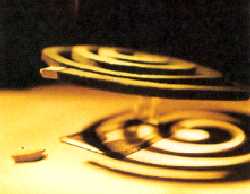How safe are mats and coils?
How safe are mats and coils?

Most vector-borne disease control programmes rely heavily on the use of residual sprays and use of mats, coils and aerosol sprays. The greatest demand for private use is for aerosols sprays, and mat and coil repellents. Southeast Asian countries alone account for 60 per cent of the demand for mats and coils. However, the potential health hazard to humans by chemicals used in these has not been assessed.
Coils commonly use insecticides like synthetic pyrethroids (allethrin, d-allethrin, bioallethrin, and esbiothrin). They burn at a tip temperature of around 800o C, which leads to the breakdown of the organic contents of pyrethroids. While allethrin vapourises at 400oC without breaking down, the breakdown products of the other pyrethroids determine their efficacy and safety. Mats also contain pyrethroids. Pyrethroids of the allethrin group such as dallethrin and d-transallethrin do not breakdown when heated, but are volatile and therefore considered suitable for use in mats.
Toxicological studies indicated that the allethrin group of compounds are metabolised rapidly in mammals. There are no reports of accumulation of these compounds in animal tissues. Since they are volatile and biodegradable, there is no chance of their accumulation in plants and soils either. Their restricted use, mostly against household pests at very low concentrations, results in little chance of their residues in food.
The results of experiments with short-term inhalation by laboratory animals indicate that allethrins are weakly to moderately toxic. The symptoms have been excitation, salivation and trembling. There are no reports of gene mutation, DNA damage and chromosomal aberrations. No toxic effects on humans have been reported so far. However, prolonged exposure of humans to these toxins, especially infants, needs to be studied.







